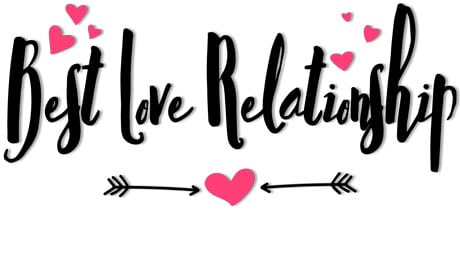Open Relationships: The Ultimate Guide to Understanding The Impact on Your Life and Well-Being

Are open relationships healthy? This is a question that many people ask themselves when considering this type of relationship.
Open relationships can be defined as romantic or sexual relationships where both partners agree to have other sexual or romantic partners outside of their primary relationship.
In this post, we will explore the different types of open relationships, the rules and boundaries that should be established, and the pros and cons of being in an open relationship.
We will also address common misconceptions about open relationships and provide tips on how to make them work.
So, if you are curious about open relationships and want to learn more, keep reading!
What are open relationships?

Open relationships are a type of relationship where partners agree to have sexual or romantic relationships with other people outside of their relationship. These relationships are built on trust, communication, and mutual respect.
Partners discuss and set boundaries, such as whether or not to use protection, how often they will see other people, and what type of relationships are allowed.
Open relationships, unlike platonic relationships, can be a way for individuals to explore their sexuality, meet new people, and enhance their emotional connections.
However, they require a high level of communication and honesty to work successfully.
In open relationships, partners must be willing to discuss their emotions, address any jealousy or insecurities, and respect each other's feelings.
Definition of open relationships
An open relationship is a consensual, non-monogamous relationship where both partners agree to have multiple sexual and/or romantic relationships outside of their primary relationship.
Communication, trust, and honesty are crucial in maintaining a healthy open relationship.
Different types of open relationships

There are various types of open relationships, including swinging, polyamory, and monogamish.
Here are 5 different types of open relationships:
1. Polyamory: multiple romantic and sexual relationships with the consent of all parties involved
2. Swinging: engaging in sexual activities with other couples or individuals with the consent of all parties involved
3. Open marriage: a married couple agreeing to have sexual relationships outside of their marriage
4. Monogamish: a couple who occasionally engages in sexual activities with others, but still identifies as primarily monogamous
5. Relationship anarchy: rejecting the idea of traditional relationship labels and structures, and allowing for fluidity and autonomy in all relationships.
Rules and Boundaries in open relationships
In an open relationship, a clear set of rules and boundaries is crucial.
It's a common misconception that open relationships equate to a free-for-all. In fact, they often require stringent guidelines to maintain the health and happiness of all parties involved.
It's vital for each person to voice their needs, expectations, and limits. Communicating these aspects ensures no one feels overlooked or disrespected. This way, a balance is struck where freedom coexists with mutual respect.
Remember, an open relationship isn’t an excuse to disregard your partner’s feelings. Establishing boundaries and respecting them forms the bedrock of an open relationship, making it not just possible, but also potentially rewarding.
What are the signs of an open relationship?
Open relationships require a high level of trust and communication between partners and a willingness, to be honest about one's feelings and desires.
Signs of an open relationship are:
- You and your partner openly communicate about your desires and boundaries.
- Both of you feel comfortable discussing and exploring the idea of non-monogamy.
- You have established rules and agreements about seeing other people.
- You both trust each other completely and have a strong foundation of honesty.
- You feel compersion, which is the ability to feel joy and happiness for your partner's connections with others.
- You have a supportive community of like-minded individuals who understand and respect your relationship dynamic.
- You are able to maintain a healthy balance between your primary relationship and any additional connections.
- Your relationship is based on mutual respect, love, and understanding, regardless of whether it is open or monogamous.
Open relationships can be incredibly fulfilling and beneficial for both partners if both parties are honest with each other and able to communicate effectively.
By understanding the signs of a healthy open relationship, you can ensure that your relationship is safe, respectful, and full of understanding.
5 Pros of open relationships
Open relationships, where both partners are aware and consent to the other's engagement in romantic or sexual relationships outside of their primary partnership, can be a source of confusion and skepticism for some. However, there are several benefits to this kind of relationship structure that can lead to a healthier, more fulfilling partnership.
The following points will delve into the top five pros of open relationships, shedding light on why some couples find this arrangement to be a perfect fit for their lifestyle and emotional needs.
1. Increased communication and honesty
In open relationships, communication tends to flourish. Couples discuss feelings, set boundaries, and openly share experiences.
This honesty builds trust, a crucial component in any relationship. Thus, open relationships can enhance your communication skills significantly.
2. More freedom and autonomy
Open relationships provide more freedom and autonomy. You're not bound by traditional expectations, which can feel liberating.
There's room to explore and understand your desires. It's a journey of self-discovery, with your partner's understanding and support.
Ultimately, this can lead to personal growth and deeper connections with others.
3. Opportunity for personal growth
Open relationships can offer an unexpected benefit: personal growth.
Engaging in this relationship style requires honesty, self-analysis, and strong communication skills.
It pushes individuals to understand their needs, boundaries, and emotional responses better. Thus, it significantly contributes to personal development and emotional maturity, enhancing overall well-being.
4. Enhanced sexual experiences
Open relationships can remarkably enhance sexual experiences. By embracing a variety of partners, individuals can explore diverse desires and fantasies.
This leads to a deeper understanding of one's own sexual preferences, thus fostering a more satisfying intimate life.
Remember, open communication is vital for such relationships to flourish safely and happily.
5. Ability to pursue other interests and relationships
Open relationships can pave the way for pursuing fresh interests and bonds.
Imagine having the freedom to explore, without resentment or guilt, the vibrant, diverse world of people and passions.
Such relationships empower you to learn, grow and love more abundantly, creating a richer, more fulfilling life.
Openness can indeed be a beautiful gift.
5 Cons of open relationships

Open relationships are often lauded for their promise of freedom and flexibility but, like any relationship model, they come with their own unique set of challenges.
While it may seem liberating to explore connections with multiple partners, it's important to consider the potential downsides as well.
Navigating emotions, setting boundaries, and maintaining trust can all become more complex in an open relationship. Moreover, societal stigma and misunderstanding can pose external challenges.
To help you make an informed decision, we delve into the top five cons of open relationships.
1. Jealousy and insecurity
Despite the freedom, open relationships often incubate seeds of jealousy and insecurity.
When you see your partner with someone else, feelings of inadequacy can surge, stirring negative emotions.
The fear of being less loved, or the anxiety of losing your partner to another, can create a constant state of emotional turmoil.
2. Risk of STIs and other health concerns
Open relationships, while enriching for some, carry a higher risk of sexually transmitted infections (STIs). The multiple sexual partners involved may open the gate for unwelcome health concerns.
Always ensure consistent and thorough protection during encounters. Remember, your health is paramount and should never be compromised for momentary pleasures.
3. Emotional attachment to other partners
Engaging in open relationships can evoke unexpected emotions.
You may find an emotional attachment forming with others, stirring stress in your primary relationship.
It's crucial to navigate these complex feelings with care, honesty, and open communication, ensuring the stability of your original bond while exploring new connections.
Remember, love is a journey, not a destination.
4. Societal stigma and judgment
Open relationships often face societal stigma and judgement, creating unnecessary challenges.
Misunderstandings arise because society tends to view monogamous relationships as the norm, misjudging open relationships as uncommitted or unstable.
Encouragement towards understanding and acceptance, rather than judgement, can foster a healthier environment for all types of love to flourish.
5. Potential for one partner to feel neglected or left out
It's not uncommon for one partner to feel sidelined or neglected.
Feelings of abandonment may sneak in as their significant other invests time and emotions with someone else.
These feelings, if unaddressed, can cause resentment, hurting the core relationship and ultimately ending in a breakup. Thus, open communication and boundaries are essential to avoid such emotional pitfalls.
Common Misconceptions About Open Relationships
Misconceptions about open relationships abound, fuelled by a lack of understanding and cultural stereotypes.
Such misunderstandings can add unnecessary strain and confusion to couples considering this relationship style, hindering them from making informed decisions.
If you're curious about open relationships or considering one, you need to know what's true and what's not. So, let's debunk the common myths and misconceptions about open relationships in the following list.
It's just an excuse to cheat
Contrary to popular belief, open relationships aren't just an avenue for infidelity.
This misconception arises due to lack of understanding. In reality, open relationships thrive on mutual consent, trust, and open communication.
They're not about cheating, but about exploring connections outside the primary relationship, with everyone's knowledge and agreement.
It's only for people who are unhappy in their relationship
Open relationships aren't just for dissatisfied couples seeking an escape from their current situation.
Often, they're forged by content, committed partners who simply desire more freedom and variety.
It's not a band-aid for unhappiness, but an alternative relationship structure based on trust, honesty, and mutual agreement.
It's always about sex
Often, the notion that open relationships are all about sexual gratification is a common misconception.
In reality, these relationships are about forming emotional bonds and mutual understanding, just like monogamous partnerships. They hinge on trust, honesty, and consent, proving that they are not merely about physical desires.
It's not a real relationship
Open relationships are commonly misunderstood as not being authentic relationships. This is a misleading belief.
Open relationships, like any other, hinge on trust, communication, and mutual respect.
They're not about casual flings, but instead about loving and connecting with multiple partners, fostering a unique form of relationship intimacy.
How to make open relationships work

Open relationships can be complex, filled with nuances that are different from traditional monogamous relationships.
They require a deep understanding and agreement between partners, clear boundaries, and constant communication. However, when navigated correctly, they can provide a fulfilling and enriching experience for both parties involved.
The challenge lies in understanding the dynamics and stages involved in making an open relationship work.
Misunderstandings and misconceptions are common, but with the right approach, these can be avoided.
The following stages, when followed, can lead to a successful open relationship.
Open and honest communication
For open relationships to thrive, open and honest communication is key.
Partners must share their feelings, boundaries, and expectations without hesitation.
Regular check-ins ensure no one feels overlooked. Transparency builds trust, eliminates assumptions and fosters a healthy relationship.
Remember, love isn't confined, but understanding and respect are paramount.
Establishing clear boundaries and rules
Open relationships thrive with clear boundaries. It's crucial to establish rules - like honesty about new partners, safe intimacy practices, or time devoted to each other.
Regularly checking in, respecting feelings, and adjusting rules as needed can foster trust and growth.
Remember, it's about mutual happiness and fulfilling love.
Regular check-ins and reassessment of the relationship
Open relationships thrive on communication. Regular check-ins are essential, providing a platform to express feelings and concerns.
This constant reassessment maintains transparency, builds trust, and nurtures growth. Thus, keeping the love alive even in an unconventional setting.
Remember, honesty is the keystone of any successful relationship, open or otherwise.
Dealing with jealousy and insecurity
Your relationship requires honesty and trust to mitigate jealousy and insecurity.
Being transparent about your feelings, setting boundaries, and maintaining open communication fosters a safe environment. This, in turn, can minimize jealousy and insecurity, making an open relationship work successfully.
Trust your partner, express your emotions, and cherish the bond you share.
Honesty and transparency
Honesty and transparency are like two sides of love's golden coin.
They are essential to building trust in every relationship. When you're honest, you show your true self. Transparency, on the other hand, removes any doubts and fear.
Together, honesty and transparency create a strong foundation for love to thrive and grow.
Respect for each other's feelings and needs
Respect for each other's feelings and needs is a vital ingredient in a healthy open relationship. It's about acknowledging your partner's emotions, listening actively and fulfilling their needs.
This mutual respect nurtures a strong bond, creates trust, and cultivates a loving environment where both partners feel valued and cherished.
Are open relationships healthy?

Open relationships can be healthy if all parties involved are supportive, honest, and open about expectations.
It requires strong communication, respect, trust, and understanding. However, it may not suit everyone and may lead to emotional complications.
It's important to consider personal feelings and boundaries.
Factors that contribute to a healthy open relationship
It's not just about the freedom to explore other connections, but also about maintaining a strong bond with your partner.
Here are seven factors that contribute to a healthy open relationship:
1. Open communication is key
2. Establishing ground rules
3. Mutual respect for each other's partners
4. Embracing honesty at all times
5. Prioritizing emotional and sexual health
6. Regularly checking in on each other's feelings
7. Maintaining a balance between time spent together and apart
Understanding these factors is crucial to enjoying a successful open relationship.
Communication is the bedrock of trust and understanding, and honesty is its constant companion.
Prioritizing health, respecting partners, and checking in on feelings ensure a balanced relationship, lending credence to the adage that 'the heart grows fonder with a bit of distance'.
Addressing concerns and issues in a timely manner
A thriving open relationship hinges on the timely resolution of concerns and issues.
It's vital to openly discuss any fears or misunderstandings as they arise.
This immediate approach cultivates trust, which is the cornerstone of any successful relationship. Remember, communication is the key to navigating the complexities of an open relationship.
Importance of self-awareness and emotional intelligence
Understanding oneself, through self-awareness, is pivotal to a thriving open relationship.
Nurturing emotional intelligence allows for empathy and compassion, enabling partners to navigate the complexities of love.
These factors foster trust, respect, and mutual growth, creating a harmonious balance, essential for a healthy, open relationship.
Balancing individual and collective needs
In successful open relationships, balance is the key. Both partners need individual space, yet a shared bond remains vital.
Respect for personal desires and mutual needs fosters health and harmony. Open communication, understanding, and mutual consent form the foundation.
This balance creates a thriving open relationship, meeting individual and collective needs.
FAQ
Addressing common questions and concerns about open relationships, such as:
Is it a good idea to be in an open relationship?
Open relationships can work for some individuals who communicate effectively, establish explicit ground rules, and maintain honesty.
However, it's not ideal for everyone, as it requires a high level of emotional maturity and can risk jealousy. It's crucial to understand your emotional needs.
What are the negative effects of open relationships?
Open relationships can lead to feelings of jealousy, insecurity, and diminished self-worth.
They might also increase the risk of sexually transmitted infections. Additionally, they require a high level of communication and trust, which can be stressful for some individuals.
Can a one-sided open relationship work?
A one-sided open relationship can work if both partners are fully informed and consensual. Yet, it often leads to emotional imbalance and dissatisfaction.
It requires exceptional communication, understanding, and respect for personal boundaries to succeed.
Do open relationships last?
Yes, open relationships can last if both partners communicate effectively, set clear boundaries, and maintain trust.
Success depends on the individuals involved and their commitment to the relationship's terms. It's not for everyone, but it works for some.
What causes open relationships to fail?
Open relationships often fail due to a lack of communication, trust, and emotional maturity.
Additionally, incompatible expectations or boundaries, feelings of insecurity, and jealousy can destabilize the relationship, leading to its failure.
Conclusion
In conclusion, whether open relationships are healthy or not can vary greatly. It depends on the individuals involved and the agreed-upon boundaries.
Communication, trust, and respect play an important role in the success of the health of an open relationship.
For more insights about relationships and possible signs of infidelity, don't hesitate to check out our article on '20 Physical Signs your girlfriend just slept with someone else.' It's a must-read!
What are your experiences with open relationships? let us know in the comments below!



